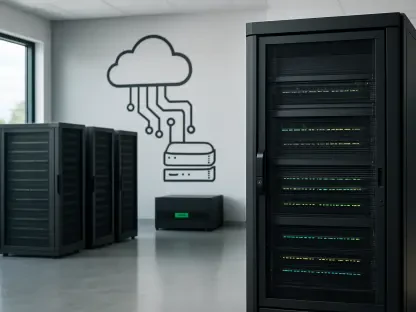In March 2025, the technology world buzzed with news of a potential Oracle Cloud data breach, where a hacker claimed to have swiped six million records from over 140,000 tenants. Oracle swiftly denied the breach, asserting its cloud infrastructure remained uncompromised. Yet, the incident—whether real or a false alarm—has reignited a critical conversation: in an era where businesses live and breathe in the cloud, how secure is our data, and why does it matter more than ever?
Such incidents necessitate a renewed focus on security measures. The primary goal is to fortify cloud infrastructures, ensuring they repel attacks and protect valuable data. Here are some key strategies to bolster security in the wake of such breaches.
1. Apply Updates Promptly
The recent Oracle cloud data breach has shed light on the importance of taking swift and effective steps to secure cloud environments, especially when core systems like login servers are compromised. The breach reportedly stemmed from a known vulnerability in Oracle’s single sign-on system that remained unpatched, giving attackers unauthorized access to sensitive data like encrypted passwords and authentication keys. In such cases, the first and most crucial safeguard is the timely patching of all systems.
Organizations must ensure that identified vulnerabilities, especially those affecting authentication or access points, are patched without delay. The flaw exploited in this case was detected in 2021 but went unaddressed, ultimately leading to a costly outcome. Regular updates and prompt application of patches are vital practices in any security strategy. This action can significantly reduce the risk of unauthorized access and potential data breaches.
Adopting an effective patch management system is essential. This requires collaboration across teams to ensure that patches are tested and deployed expediently. Automation tools can be utilized to streamline this process, reducing the window of vulnerability. In essence, staying vigilant and proactive about updates can act as a strong deterrent against cyberattacks.
2. Rotate Credentials Regularly
Another critical step in bolstering cloud security is the regular rotation of credentials. All passwords, tokens, encryption keys, and certificates potentially compromised in the breach need to be changed. This measure effectively nullifies any stolen data the attacker might have obtained. Credential rotation serves as a preventive measure that can mitigate the impact of compromised credentials.
Organizations should implement policies that enforce periodic changes of such credentials. This is especially important for high-privilege accounts that have access to sensitive data and systems. By regularly updating these credentials, the risk of unauthorized access is minimized, providing an additional layer of security.
Moreover, advanced techniques such as using unique, complex passwords and employing password management tools can further enhance security. Such practices ensure that even if one set of credentials is compromised, the potential for further damage is significantly reduced. Continuous education and awareness about the importance of credential security are necessary for maintaining robust defense mechanisms.
3. Enable Multi-Factor Authentication
Implementing Multi-Factor Authentication (MFA) across all critical systems is another essential step in safeguarding data. Even if login credentials are compromised, MFA adds an extra layer of security, preventing unauthorized access. MFA typically requires users to provide two or more verification factors before granting access, making it significantly more difficult for attackers to infiltrate systems.
Organizations must prioritize the deployment of MFA, especially for systems containing sensitive and critical data. This can include diverse methods such as SMS-based verification, authentication apps, hardware tokens, and biometric verification. The additional authentication steps help verify the user’s identity, ensuring that even stolen credentials are not sufficient for unauthorized entry.
Routine evaluation and updating of MFA protocols can prevent potential vulnerabilities. By integrating MFA with other security measures, a more comprehensive and resilient security framework is established, protecting against both internal and external threats.
4. Conduct Audit Logs and Forensic Analysis
Continuous monitoring and analysis of activity logs are crucial for detecting unauthorized access and identifying persistent threats. Organizations should scrutinize logs and undertake forensic investigations to uncover any anomalies. Enhanced monitoring tools can help detect unusual activities early and allow real-time responses, thereby mitigating potential damage.
Maintaining detailed and exhaustive logs is necessary for effective monitoring. These logs should capture various activities, including access requests, login attempts, and data transfers. By analyzing these logs, security teams can identify patterns that may indicate a breach or unauthorized activity.
Forensic analysis also plays a vital role in understanding the extent and impact of a breach. By examining compromised systems and identifying the attack vectors, organizations can develop strategies to prevent future incidents. Tools leveraging artificial intelligence (AI) and machine learning can enhance the accuracy and efficiency of these analyses.
5. Communicate Transparently
Lastly, clear and transparent communication between Oracle, affected clients, and users is paramount. Oracle and affected clients should openly communicate with users, offering guidance on changing passwords and best practices for securing accounts. Effective communication can help mitigate panic and ensure that users take appropriate actions to secure their data.
Providing timely and accurate information about the breach, its impact, and the steps being taken to address it is essential. This transparency helps maintain trust and enables users to take necessary precautions. Communication should include detailed instructions on how users can protect their accounts, along with general cybersecurity best practices.
In addition, organizations should consider offering support services to help users navigate the process of securing their accounts. This can include dedicated help lines, FAQs, and user education initiatives. By proactively addressing concerns and providing clear guidance, organizations can reinforce their commitment to security and user trust.
Prioritizing Cloud Security
In March 2025, rumors about a significant Oracle Cloud data breach circulated, with a hacker claiming to have stolen six million records from over 140,000 tenants. Oracle quickly countered these claims, insisting that their cloud infrastructure had not been compromised. Nevertheless, whether true or merely a scare, the incident has sparked a vital discussion: in today’s era where businesses heavily rely on cloud technology, how secure is our data, and why is this security more critical than ever?
Such situations demand a renewed focus on robust security measures. The main objective must be to strengthen cloud infrastructures to thwart attacks and safeguard precious data. Implementing best practices like multi-factor authentication, regular security audits, encryption of data at rest and in transit, employee training, and constant monitoring can significantly enhance cloud security.
Ultimately, protecting data in the cloud should be a top priority for businesses to maintain trust and ensure operational continuity in an increasingly digital world.









